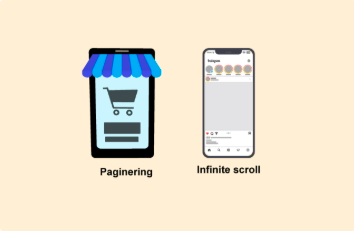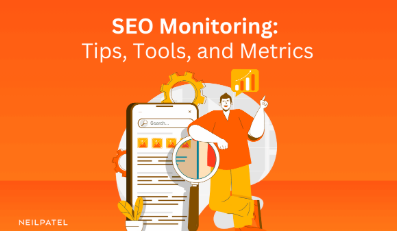The web is constantly evolving to create smoother, faster, and more engaging user experiences. One of the most widely used design patterns today is infinite scroll — a feature where new content loads automatically as the user keeps scrolling. From social media platforms to e-commerce sites and online news portals, infinite scroll has become a go-to solution for keeping users engaged.
But while infinite scroll feels natural for users, it can be tricky for search engines. If not optimized properly, much of the content may remain hidden from crawlers, leading to poor indexing and visibility. This is where Infinite Scroll SEO comes into play. In this guide, we’ll break down what infinite scroll is, why it matters for SEO, the challenges it creates, and how to optimize it effectively.
What is Infinite Scroll?
Infinite scroll is a web design approach where additional content loads automatically as a user moves down the page, instead of requiring them to click through to a new page. It’s designed to keep visitors engaged without interruptions.
Examples where infinite scroll is commonly used:
- Social media feeds (such as Instagram or Twitter-style platforms).
- News and media outlets that continuously display articles.
- E-commerce websites showcasing endless product catalogs.
This method eliminates the need for pagination, giving users a smooth, continuous browsing experience.
Infinite Scroll vs. Pagination
While infinite scroll enhances usability, traditional pagination still has its place in SEO.
- Pagination: Breaks content into numbered sections (Page 1, Page 2, Page 3). Search engines easily crawl and index these sections because each one has its own unique URL.
- Infinite Scroll: Creates a seamless feed but may hide content from crawlers since everything loads dynamically, without clear URLs for different sections.
From a user’s perspective, infinite scroll is usually preferred. From a crawler’s perspective, pagination is often easier to understand and index.
SEO Challenges with Infinite Scroll
Despite its popularity, infinite scroll can create SEO obstacles if implemented without proper planning. Here are the most common issues:
- Crawlability Problems
- Search engines do not scroll automatically the way humans do. If content requires interaction to load, crawlers may never see it.
- Indexation Gaps
- Without separate URLs for different scroll sections, search engines may only index the first part of the page.
- Link Equity Loss
- With no distinct paginated pages, deeper content may receive less internal link authority.
- Analytics and Tracking Difficulties
- Measuring user activity at different scroll depths can be complicated.
- Performance Issues
- If too much content loads at once, it can slow down the website and negatively impact user experience and Core Web Vitals.
How Search Engines View Infinite Scroll
Search engines typically fetch and process content based on static HTML and accessible links. Since crawlers don’t mimic human scrolling behavior, they may only capture the initial part of a page.
This means that content revealed through infinite scroll could remain invisible unless alternative SEO-friendly methods are provided. To fix this, site owners must ensure that all content within infinite scroll is accessible in a way search engines can crawl.
Best Practices for Infinite Scroll SEO
The good news is that infinite scroll can be optimized to satisfy both users and search engines. Here are the best practices:
1. Provide Crawlable Pagination
Even if infinite scroll is used for visitors, create a secondary structure where each scroll depth corresponds to a paginated version of the content. For example, products or articles can also exist on separate numbered pages that search engines can crawl.
2. Use “Load More” Buttons
Instead of fully automatic infinite scroll, some sites implement a “Load More” button. This gives users control while still ensuring crawlers can find subsequent sections if coded properly.
3. Apply History API for Unique URLs
When a user scrolls to a new section, the page URL can update dynamically using the browser’s history API. This ensures each section of content has a unique, crawlable URL.
4. Optimize Lazy Loading
If images, videos, or scripts are lazy-loaded, make sure they load in a way that search engines can access them. Otherwise, important content may remain hidden.
5. Include in XML Sitemaps
Even if content appears within infinite scroll, ensure that deeper items are also included in the sitemap. This increases the chances that crawlers will discover them.
6. Maintain Content Parity
The content available in infinite scroll should also exist in a format search engines can process, such as a paginated archive.
7. Monitor Core Web Vitals
Performance plays a huge role in SEO. Optimizing for metrics like Largest Contentful Paint, Cumulative Layout Shift, and Interaction to Next Paint ensures that infinite scroll doesn’t hurt rankings.
Infinite Scroll SEO in Different Industries
E-Commerce
Infinite scroll helps users discover more products without multiple clicks. For SEO, ensure that each product is also accessible through a crawlable product listing or paginated category page.
News & Media
Continuous article feeds can increase time on site, but search engines still need individual article URLs and paginated archives to index all content.
Blogs & Content Hubs
Older blog posts can get buried in infinite scroll. Creating category archives with pagination helps search engines crawl everything.
Social Platforms
Social media thrives on infinite scroll, but SEO is less critical here because much of the content is private or user-driven.
Real-World Example of Infinite Scroll SEO
Some large content-heavy platforms have successfully combined infinite scroll with SEO best practices. They maintain user-friendly endless feeds while ensuring that every batch of content has unique, crawlable URLs and is linked in their sitemap. This hybrid approach balances usability with search engine accessibility.
The Future of Infinite Scroll SEO
As search engines get better at processing JavaScript and simulating user behavior, infinite scroll will become less problematic. However, relying entirely on crawler improvements is risky. Forward-thinking site owners are adopting hybrid models: infinite scroll for users, with pagination and structured URLs for crawlers.
Future developments likely include:
- Improved bot simulations of human scrolling.
- Deeper integration of infinite scroll into progressive web applications.
- Stronger ties between infinite scroll performance and Core Web Vitals.
Infinite Scroll SEO Checklist
- Ensure paginated versions exist alongside infinite scroll.
- Give each section of content a unique, crawlable URL.
- Optimize lazy-loaded content for search engine access.
- Add infinite scroll sections to XML sitemaps.
- Test with mobile-first indexing in mind.
- Track user engagement across scroll depth with analytics.
Conclusion
Infinite scroll can be a powerful way to enhance user experience, keeping visitors engaged and exploring more content. But without proper SEO optimization, much of that content may remain invisible to search engines, limiting organic reach.
By combining infinite scroll with paginated structures, unique URLs, and crawl-friendly design, you can strike the perfect balance between usability and SEO. When implemented correctly, infinite scroll not only keeps users browsing but also ensures that every piece of content is discoverable and indexable.
The key is balance: design for users first, but structure for search engines at the same time. Done right, infinite scroll SEO delivers the best of both worlds — high engagement and strong search visibility.



